September 5-8, 2012
RiverFlow, San Jose, Costa Rica
Abstract
Within the Dutch research project ’Valley wide meander restoration’ six restored streams will be monitored over a 2-year period. The monitoring program aims at understanding initial morphological processes and the associated ecological developments. The present study focuses on the morphodynamic developments that took place after the completion of one of the restoration projects. The morphology and hydraulics of the field sites are evaluated using sequential GPS-surveys, discharge records and information from sediment samples. The present contribution concerns the Hooge Raam, where a new channel is constructed parallel to the stream that was to be restored. The channel was designed to investigate the autogenous formation of a meandering channel from an initially straight reach, designed based on hydraulic geometry relations. Eight months after construction of the stream, alternating bars emerged in the downstream part of the stream. Analysis of ten successive bed level surveys about two months apart shows channel bar migration and an increase of both the bar height and their wavelengths. Bar wavelength is increasing in time until it reaches an equilibrium value. The dynamics of both migration speed and bar height respond to the dynamics in the varying discharge.
×
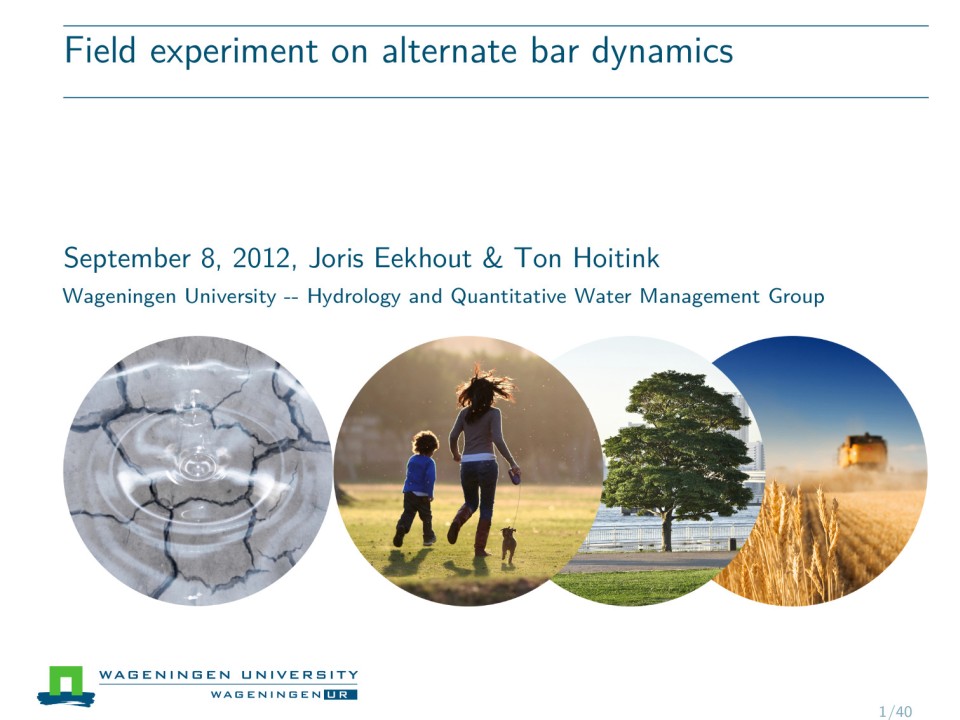
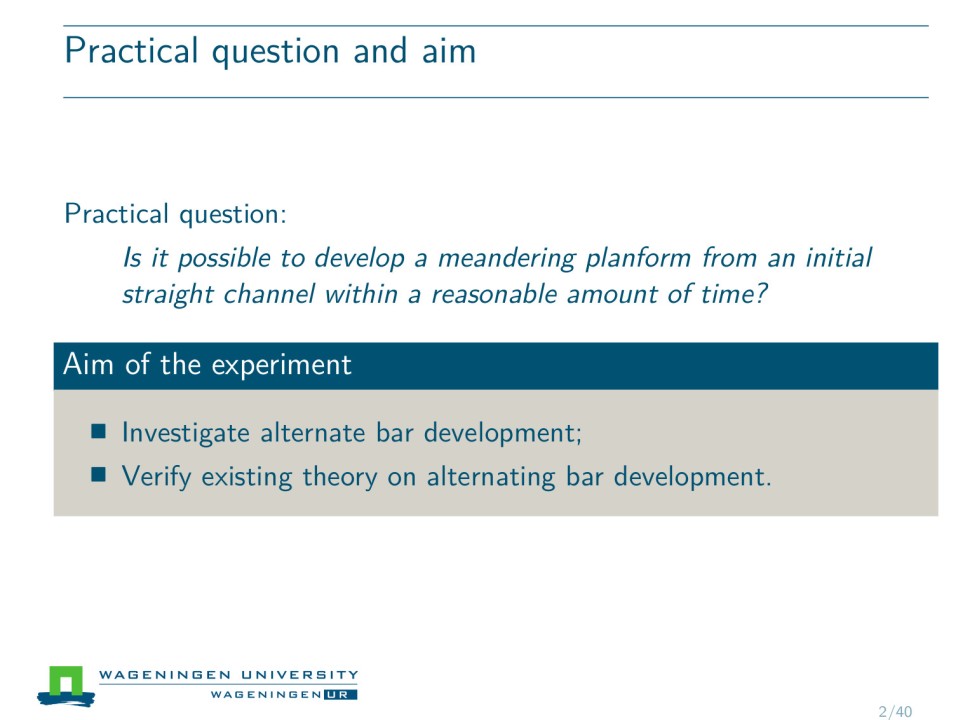
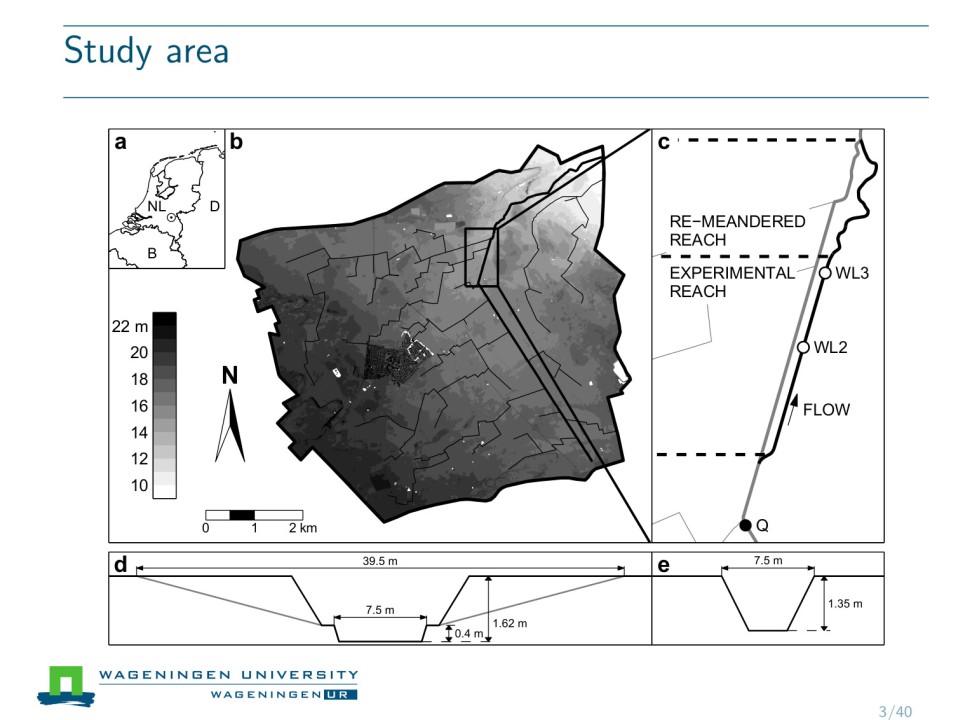
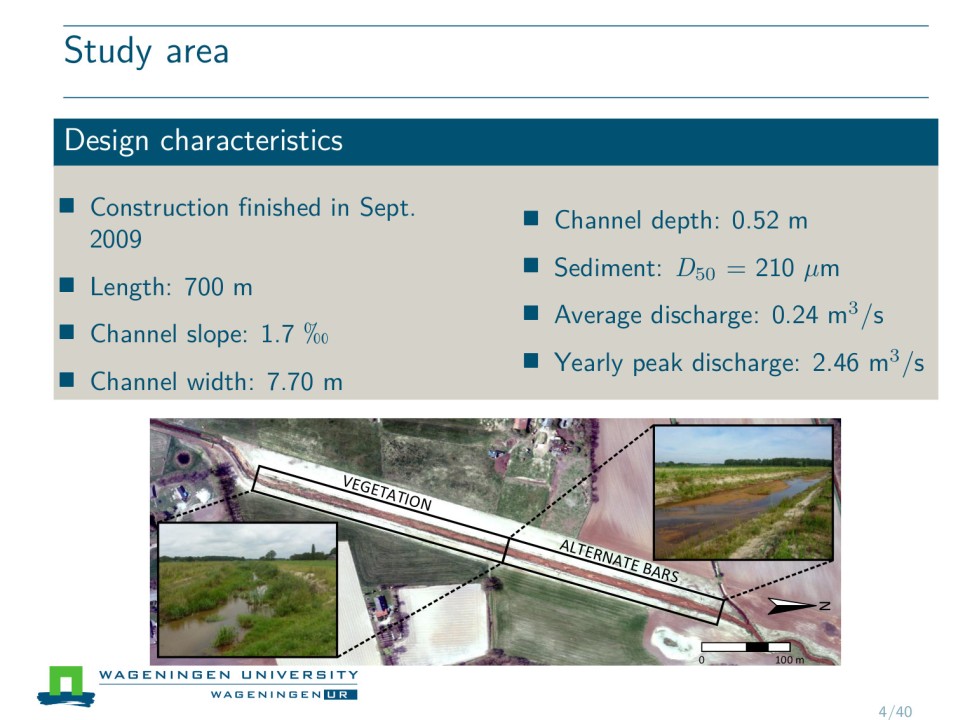
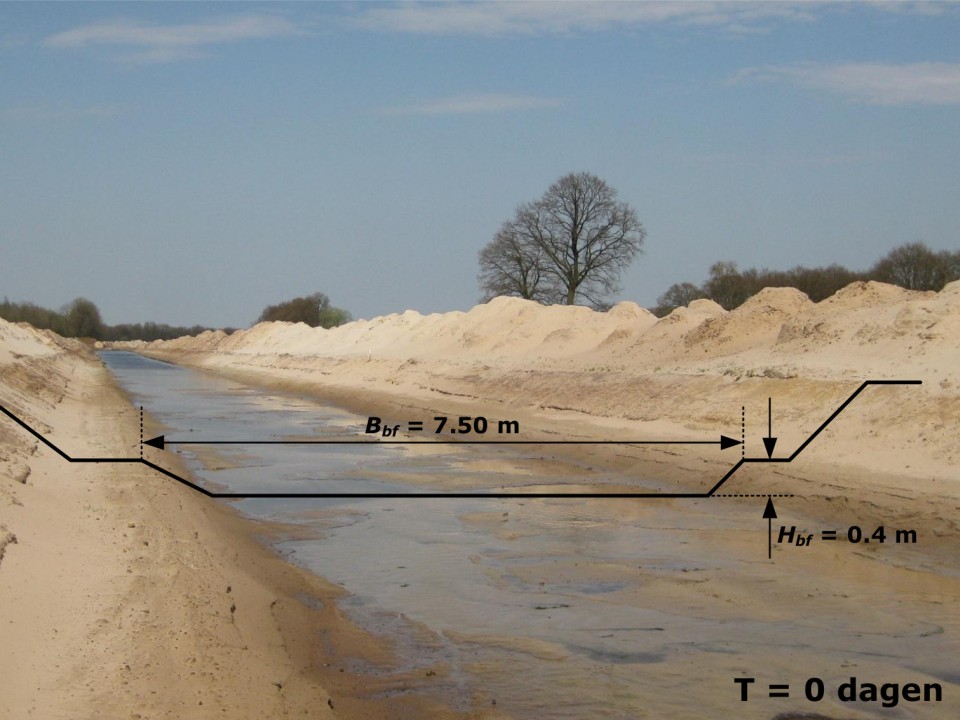
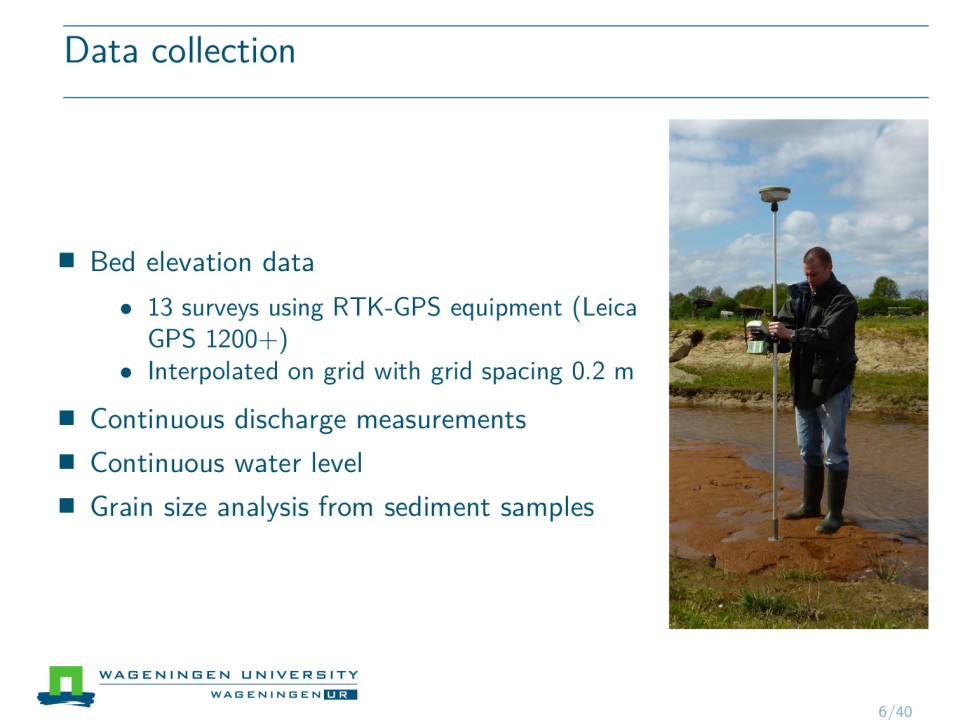
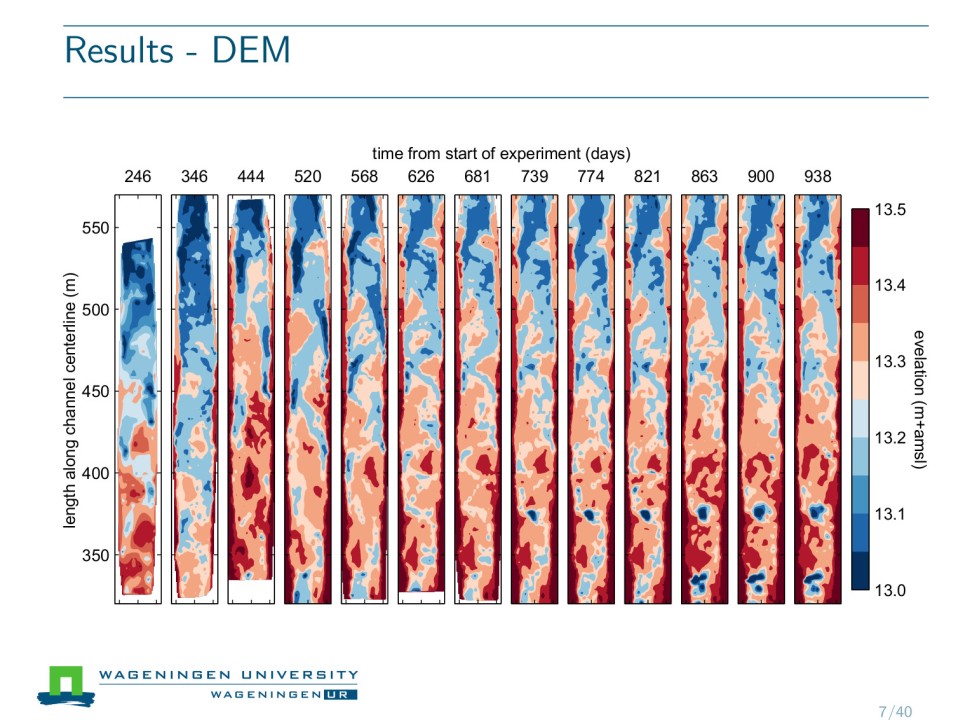
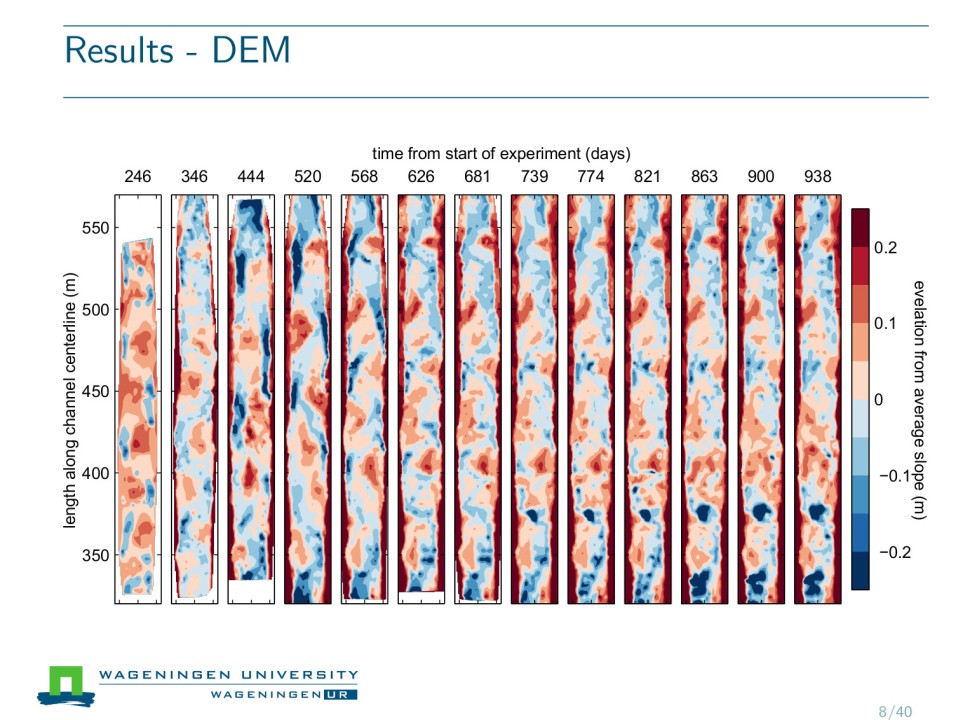
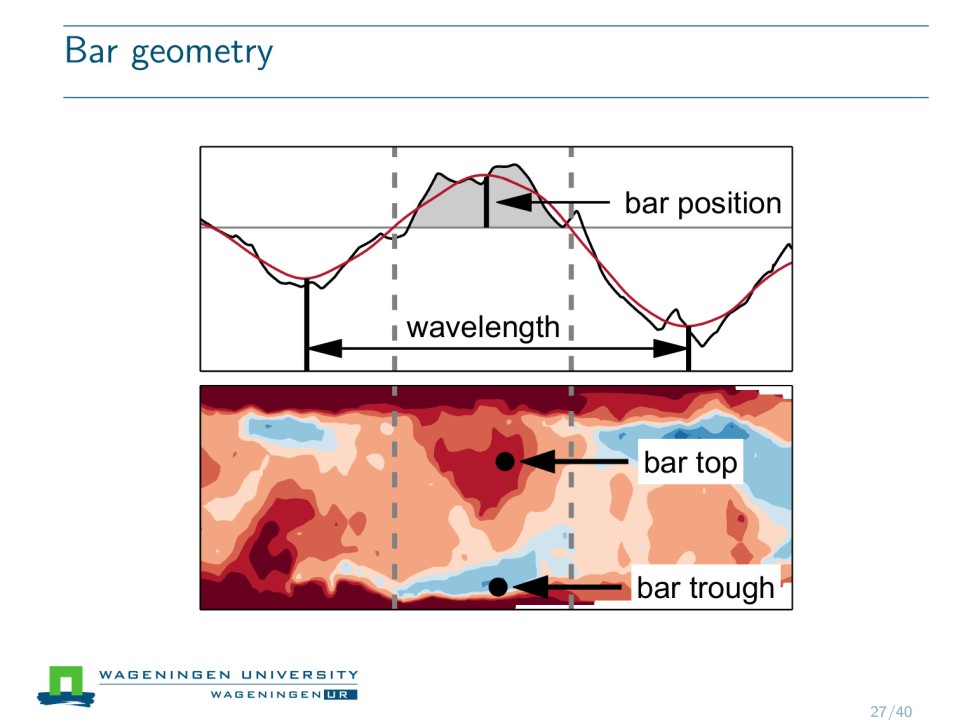








1/16
Here we presented the results of a large-scale field experiment on alternate bar dynamics

2/16
In collaboration with a Dutch water board (water authority) we performed a field experiment with the aim to investigate if it is possible to develop a meandering planform from an initial straight channel within years after construction. This could serve as an alternative for the current practice of re-meandering in Dutch lowland stream restoration

3/16
The study area is located in the eastern part of the Netherlands. The experimental channel reach has a length of 700 meters. A new channel was constructed with a width of 7.5 meters and a depth of 40 centimeters

4/16
Alternate bars formed in the downstream part of the experimental reach. In the upstream part vegetation dominated the channel soon after the experiment started

5/16
This photo shows the channel when it was constructed and clearly shows the shallow cross-section

6/16
The field monitoring focussed on the morphological development of the experimental reach. Morphological data were obtained with GPS equipment and interpolated onto a grid. Besides, discharge and water level were measured continuously and grain size analysis was made from sediment samples

7/16
This figure shows the digital elevation model (DEM) of 13 morphological surveys, up to 2 and a half years after construction

8/16
The alternate bars become more apparent when the average slope is subtracted from the DEMs. The first bars started to appear around 8 months after the start of the experiment and became morphologically active in the first 1 and a half year

9/16
From the DEMs we determined bar characteristics, such as bar length, bar amplitude and bar position. The bar amplitude is defined as the difference between the bar top and bar trough

10/16
This figure shows the development of the bar geometry during the experiment. The bar length and bar amplitude initially increased, where the bar length increased to an equilibrium. The bars migrated between the 2nd and 5th survey

11/16
During the 2 and a half year of experiment, the slope decreased, from initial 1.7 m/km to 0.9 m/km

12/16
To investigate the main reason for the decrease of the channel slope, we set up a hydraulic model (Sobek-1D), which was calibrated using a low-flow and high-flow water level profile

13/16
Next, the model was used to study the relationship between flow velocity dynamics and bar response

14/16
In this figure, the green periods show when bar amplitude increases and red periods when bar amplitude decreases. It shows that bar amplitude increases during periods of high bed shear stress

15/16
In this presentation we showed that alternate bars developed within months after the start of a field experiment. During a period of over 2 and a half years, the bars were morphologically active, with increases and decreases of bar amplitude and bar migration. Future work will focus on the application of alternate bar theory

16/16
Thanks you for your attention